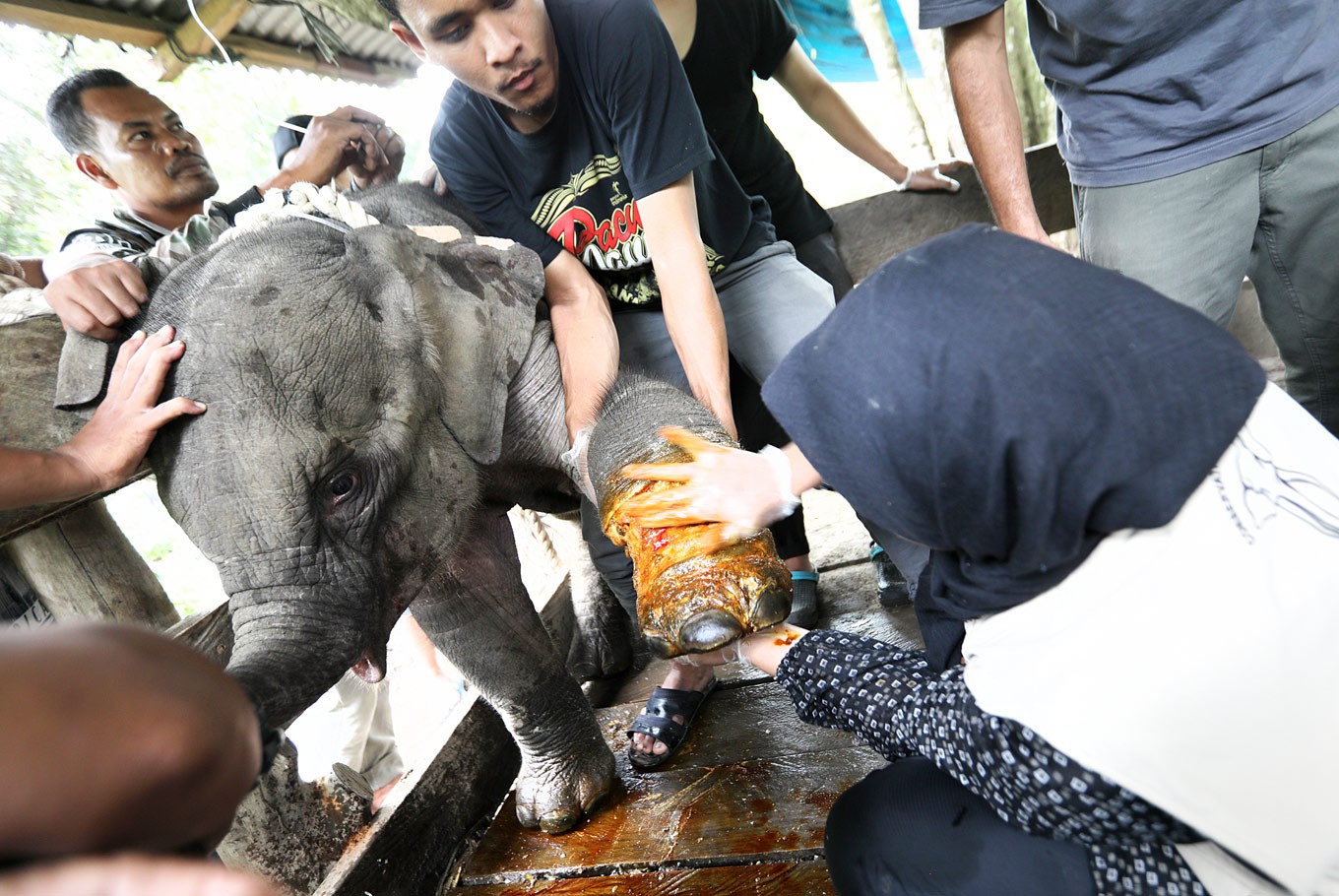In a remote village in Khao Hoi Hua, Moo 8, Amphoe Khao Chamao, Rayong Province, a heart-wrenching discovery unfolded as villagers stumbled upon a female calf elephant, less than a month old, struggling with a rotting leg infested with worms. The cause? A cruel metal trap that had ensnared the young elephant, leaving her abandoned by her herd. This distressing incident sheds light on the pervasive issue of snaring, a problem plaguing forests across Southeast Asia.
The Rescue Mission:

Villagers who discovered the distressed baby elephant wasted no time in alerting forest rangers from the Khao Ang Rue Nai Wildlife Sanctuary. The rangers promptly arrived and transported the ailing calf on the sidecar of their motorcycle to seek immediate medical attention.

The female calf, weakened and emancipated from days of isolation, had endured not only the pain of the metal trap but also the harsh reality of being left behind by her herd. Forest ranger Prasan Puangsook revealed that the young elephant might have encountered wild dogs before finding refuge in a rubber plantation, where the compassionate villagers discovered her plight.

Veterinarians from Protected Area Regional Office 2 (Sri Racha) joined the rescue efforts. Dr. Nattanon Panpetch, one of the veterinarians, described the heartbreaking condition of the calf’s leg, stating, “The wire cut into the front left leg. The wound was rotten, and worms were seen squirming.” Swift action was taken as they cleaned the infected wounds and administered antibiotics, with plans for further examinations, including bone x-rays and blood tests to determine the extent of the damage.
The Larger Issue of Snaring:

The plight of this baby elephant underscores the pervasive problem of snaring in the region. According to Wildlife Alliance, snaring is a prevalent issue in various forests, particularly in countries like Vietnam and Laos. Unfortunately, it is on the rise in Cambodia, Myanmar, Indonesia, and Thailand.

These traps, originally set to catch smaller animals such as boars and deer, pose a significant threat to medium-to-large animals, including elephants. Beyond the immediate harm inflicted on individual animals, the indiscriminate nature of snaring strips forests of their biodiversity, disrupting ecosystems and threatening the delicate balance of wildlife.
Treatment and Hope:

Currently under the care of the sanctuary for treatment and rehabilitation, this young elephant symbolizes the resilience and hope that emerges even in the face of adversity. The collaborative efforts of villagers, forest rangers, and veterinarians showcase the importance of community involvement and awareness in addressing the challenges posed by snaring and its detrimental impact on wildlife.
The rescue and ongoing treatment of this baby elephant serve as a poignant reminder of the urgent need for conservation efforts and heightened awareness to combat the detrimental effects of snaring on wildlife populations. As communities come together to rescue and rehabilitate the victims of such traps, there is hope for a future where these majestic creatures can thrive without the looming threat of metal snares in their midst.